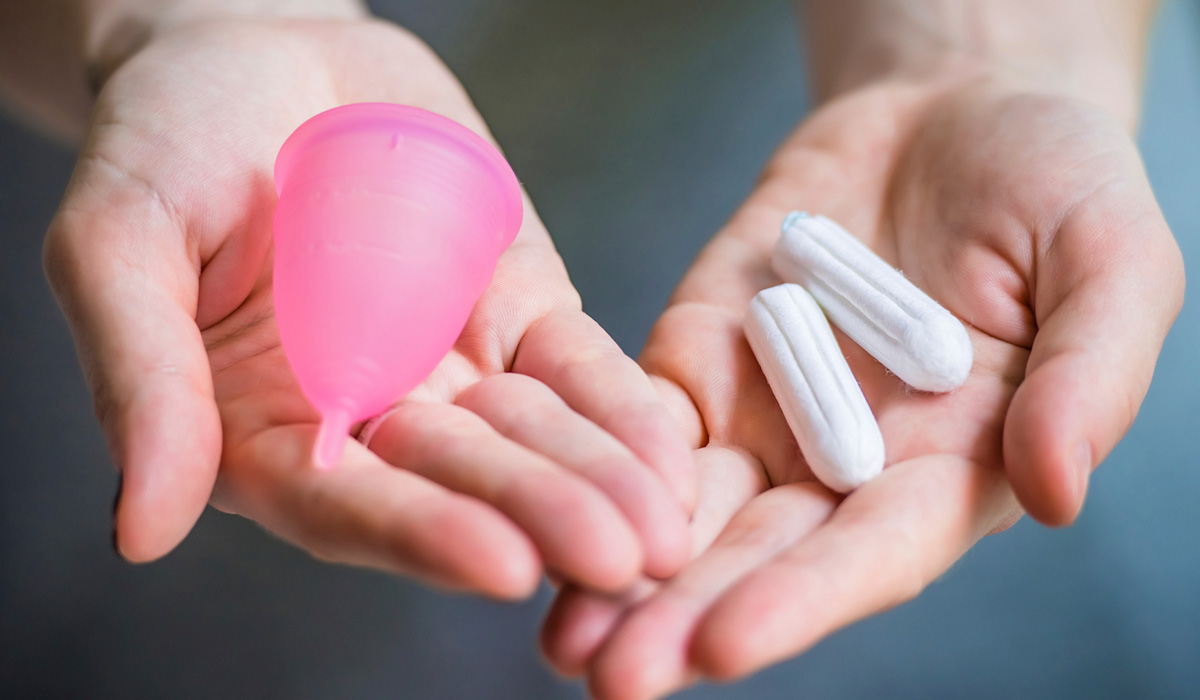Tampons or Menstrual Cup: What’s Right for You?

Tampons, pads or menstrual cups – which ones do you prefer? These are the types of questions that doctors and scientists have researched upon. And seeing as how the average woman uses over 10,000 sanitary products in her entire lifetime, it makes sense why women give their menstrual management methods serious consideration.
Sanitary Pads
Sanitary pads, otherwise known as menstrual pads or sanitary napkins, were one of the earliest products of women hygiene that are still widely used today. They come with various absorbancy levels and lengths and are usually preferred by women on light-flow days or when they may be spotting between periods. Sometimes, women even use a tampon along with their pads for extra protection. The downsides to sanitary pads are that some women find the product uncomfortable or that it isn’t suitable for certain types of physical activity.
According to one study, researchers were evaluating a group of women using menstrual pads and tampons. The results determined that while most women use tampons, women who are younger than 41 are far more likely to use them. It was also revealed that tampon users even include a pad and that one in four perimenopausal women (ages 48-54) use tampons and/or pads between their periods.
Tampons
Tampons have been around since the 30s and according to several studies, are the most popular of feminine protection for women below 41. Women usually prefer tampons as they provide them with greater physical freedom during their period. Like pads, tampons come in various sizes and levels of absorbency. Women are advised to change their tampons after at least four to eight hours and use the least absorbent type to manage their flow. However, tampons are not recommended in between periods. That’s because of the phenomenon that was seen by many women in the connection between superabsorbent tampons and an outbreak of toxic shock syndrome (TSS) in the 80s. Fortunately, the “hyper absorbable” tampons were taken off the shelves and the incidence of TSS had been reduced. Still, there is some evidence where women who use tampons are at an increased risk of urinary tract infections.
Menstrual Cups
Menstrual cups go as far back as tampons but are not that widely used by women in the United States at the moment. There are two kinds of menstrual cups; the first one is a flexible, soft and disposable cup that looks like a diaphragm; the second one is made up of silicone or rubber (latex) that looks like a bell and can be reused through cleaning. Both are meant to absorb a woman’s menstrual flow instead of absorbing them so it can be disposed of later.
Some women prefer to use menstrual cups because it is more comfortable and an eco-friendly alternative to tampons that can be worn for about 12 hours. In fact, one study reveals that women had to change the cup 2.8 times less frequently on average, then when they use pads or tampons and because it leaked 0.5 times less often. Another study shows that women who used tampons as well as had “average-to-heavy” menstrual flows, were more likely to use a menstrual cup, and so were women over 40.
Women also prefer menstrual cups as they don’t contain any harmful chemicals, fibers or bleaches that could cause sensitivity or allergic reactions. In addition, the soft flexible cups can be worn during intercourse, which makes the experience less messy for women as well as their partners.
There are some women who claim that it is tougher to insert and remove menstrual cups than it is with tampons but that’s only because they lack the proper education about proper body and insertion techniques. And one of the other main disadvantages of using a reusable cup was the need to clean them, which is easily rectified by using a disposable menstrual cup.
Therefore, menstrual cups are a relatively better option than tampons and sanitary pads. To get started on the right track, check out this Saalt Cup review.